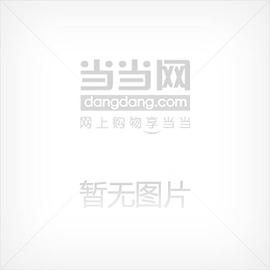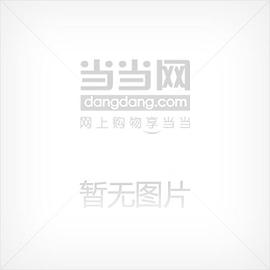

具体描述
NULL
作者简介
目录信息
CONTENTS
Part One
Basic Knowledge of Traditional Chinese Pediatrics
Chapter 1 Characteristics of Children's Physiology
and Pathology
1. Physiological Characteristics
A. Deflciency of the Zang-Fu organs and the immaturity of the body
and its functions
B. Vitality and rapid growth
2. Pathological Characteristics
A. Susceptibility to illncsscs, which develop and changc rapidly
B. Quick recovery of health due to cleanness of Zang Qi and rapid
responsc to treatment
Chapter 11 General Description of the Four Diagnostic
Methods
1. Inspection
A. Observation of the expression and complexion
B. Observation of the appearance and body movement
C. Observation of the tongue, eye, mouth, nose, car, and anterior
and posterior Yin (external genitalia and anus respectively)
D. Observation of the skin eruptions
E. Observation of the stool and urinc
F. Observation of the capillary vessel of the index flnger
2. Auscultation and Olfaction
A. The cry
B. The breathing
C. The coughing
D. The speech
E. Smells
3. Inquiring
A.Age
B. Present illness
C. Personal history
4. Palpation
A. Feeling the pulse
B. Palpation of certain areas of the body
Chapter III General Description of Treatment
1. Characteristics of Prescribing Herbs for Children
A. Treatment stops in the middle stage
B. Application of suitable forms of herbs
C. Dosage of Chinese herbs for children
D. Methods of administration
2. Characteristics of Acupuncture and Moxibustion
Treatment for Children
A. Needling at the precise acupuncture points without needle
retention
B. The needling sensation must be obtained
C. Mastering the needling techniques of reinforcing the deficiency
reducing the excess, clearing heat and eliminating cold
D. Commonly used methods of treatment of pediatric diseases
3. Commonly Used Methods ofExternal Application of
Chinese Herbs
A. Steaming and washing
B. Smearing and painting
C. Packing
D. Hot compress
E. Plaster
F. Rubbing and cleaning
G. Sneezing
4. Other Therapies
A. Needling Sifeng (Extra.)
B. Incision
C. Spinal pinch method
D. Cupping
Part Two
Treatment of Diseases
Chapter 1 Common Diseases
1. Coughing
2. Pneumonia
3. Asthma
4. Thrush
5. Vomiting
6. Diarrhea
7. Gan Syndrome (Malnutrition)
8. Convulsion
9. Epilepsy
10. Intestinal Parasites
11.Edema
12. Nocturnal Enuresis
Chapter 11 Seasonal Diseases
1. The Common Cold
2. Measles
3. Rubella
4. Scarlet Fever
5. Chickenpox
6. Mumps
7. Whooping Cough
8. Diphtheria
9. Epidemic Encephalitis B
10. Infamile Paralysis
11. Epidemic Toxic Dysentery
12. Summer Fever
· · · · · · (收起)
Part One
Basic Knowledge of Traditional Chinese Pediatrics
Chapter 1 Characteristics of Children's Physiology
and Pathology
1. Physiological Characteristics
A. Deflciency of the Zang-Fu organs and the immaturity of the body
and its functions
B. Vitality and rapid growth
2. Pathological Characteristics
A. Susceptibility to illncsscs, which develop and changc rapidly
B. Quick recovery of health due to cleanness of Zang Qi and rapid
responsc to treatment
Chapter 11 General Description of the Four Diagnostic
Methods
1. Inspection
A. Observation of the expression and complexion
B. Observation of the appearance and body movement
C. Observation of the tongue, eye, mouth, nose, car, and anterior
and posterior Yin (external genitalia and anus respectively)
D. Observation of the skin eruptions
E. Observation of the stool and urinc
F. Observation of the capillary vessel of the index flnger
2. Auscultation and Olfaction
A. The cry
B. The breathing
C. The coughing
D. The speech
E. Smells
3. Inquiring
A.Age
B. Present illness
C. Personal history
4. Palpation
A. Feeling the pulse
B. Palpation of certain areas of the body
Chapter III General Description of Treatment
1. Characteristics of Prescribing Herbs for Children
A. Treatment stops in the middle stage
B. Application of suitable forms of herbs
C. Dosage of Chinese herbs for children
D. Methods of administration
2. Characteristics of Acupuncture and Moxibustion
Treatment for Children
A. Needling at the precise acupuncture points without needle
retention
B. The needling sensation must be obtained
C. Mastering the needling techniques of reinforcing the deficiency
reducing the excess, clearing heat and eliminating cold
D. Commonly used methods of treatment of pediatric diseases
3. Commonly Used Methods ofExternal Application of
Chinese Herbs
A. Steaming and washing
B. Smearing and painting
C. Packing
D. Hot compress
E. Plaster
F. Rubbing and cleaning
G. Sneezing
4. Other Therapies
A. Needling Sifeng (Extra.)
B. Incision
C. Spinal pinch method
D. Cupping
Part Two
Treatment of Diseases
Chapter 1 Common Diseases
1. Coughing
2. Pneumonia
3. Asthma
4. Thrush
5. Vomiting
6. Diarrhea
7. Gan Syndrome (Malnutrition)
8. Convulsion
9. Epilepsy
10. Intestinal Parasites
11.Edema
12. Nocturnal Enuresis
Chapter 11 Seasonal Diseases
1. The Common Cold
2. Measles
3. Rubella
4. Scarlet Fever
5. Chickenpox
6. Mumps
7. Whooping Cough
8. Diphtheria
9. Epidemic Encephalitis B
10. Infamile Paralysis
11. Epidemic Toxic Dysentery
12. Summer Fever
· · · · · · (收起)
读后感
评分
评分
评分
评分
评分
用户评价
评分
评分
评分
评分
评分
相关图书
本站所有内容均为互联网搜索引擎提供的公开搜索信息,本站不存储任何数据与内容,任何内容与数据均与本站无关,如有需要请联系相关搜索引擎包括但不限于百度,google,bing,sogou 等
© 2025 book.quotespace.org All Rights Reserved. 小美书屋 版权所有




















